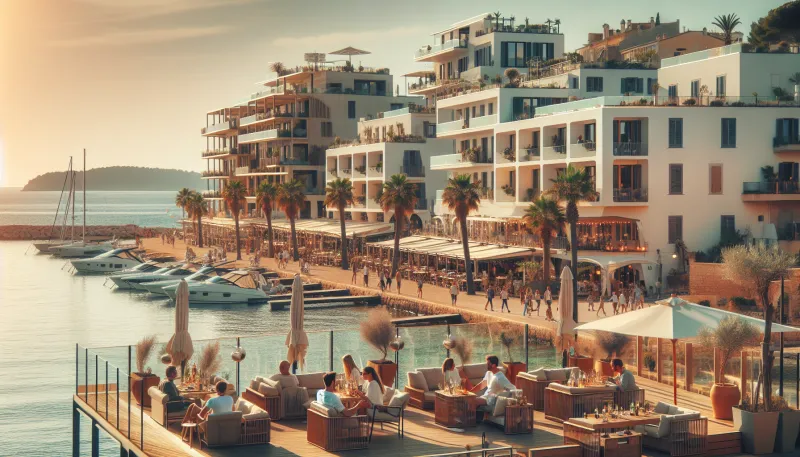
Southern Europe’s Real Estate Revival: Spain, Portugal, and Italy
The real estate markets of Southern Europe, particularly in Spain, Portugal, and Italy, are experiencing a significant revival. After years of challenges, these countries are now attracting both domestic and international investors, driven by favorable economic conditions, attractive property prices, and broader lifestyle trends. This article explores the key factors behind the resurgence of real estate in these Mediterranean nations and highlights notable market developments, investment opportunities, and urban transformations.
- Economic recovery fueling investment
- Spain’s dynamic housing market
- Portugal’s rise as a hotspot for foreign buyers
- Historic city centers in Italy gaining renewed interest
- Sustainability shaping new developments
- Impact of tourism on coastal real estate
- Government incentives supporting property buyers
- Challenges facing the market revival
- Future outlook for southern Europe’s real estate
Economic recovery fueling investment
Following the economic downturns caused by the global financial crisis and the COVID-19 pandemic, southern European economies are showing resilience and steady growth. Spain, Portugal, and Italy have all benefited from increased consumer confidence and government stimulus packages, which have reignited interest in property development and acquisitions. This economic uplift has played a crucial role in encouraging investors to re-engage with the region's real estate sector.
Spain’s dynamic housing market
Spain remains at the forefront of Southern Europe’s real estate revival. Cities like Madrid and Barcelona continue to see strong demand from both domestic buyers and foreign investors. Factors such as improved infrastructure, vibrant tourism, and growing technology sectors have sustained interest in urban residential and commercial properties. Coastal regions, particularly along the Mediterranean, also attract buyers looking for holiday homes or retirement options.
Portugal’s rise as a hotspot for foreign buyers
Portugal's property market is notable for its appeal to international buyers, propelled by favorable residency programs like the Golden Visa. Lisbon and Porto have witnessed a surge in luxury property developments, while the Algarve region remains a favored destination for second homes. The country’s relatively affordable prices combined with high quality of life make it increasingly attractive for long-term investments.
Historic city centers in Italy gaining renewed interest
Italy’s traditional allure continues to be a driver for real estate demand, especially in cities with rich historical and architectural heritage such as Rome, Florence, and Venice. Renovation projects in historic districts are attracting investors focused on boutique hotels and luxury residences. Additionally, smaller towns are gaining popularity as remote work becomes more common, offering a combination of culture, tranquility, and modern amenities.
Sustainability shaping new developments
Across Southern Europe, sustainability has become a key factor in real estate projects. Developers in Spain, Portugal, and Italy are incorporating green building standards, energy-efficient designs, and renewable technologies to meet stricter regulations and buyer preferences. This shift not only enhances environmental impact but also increases property value and appeal to eco-conscious investors and buyers.
Impact of tourism on coastal real estate
Tourism remains a dominant influence on coastal real estate in Southern Europe. Popular seaside locations have recovered strongly from the pandemic slump, with a resurgence in short-term rental markets and vacation home sales. This trend has encouraged redevelopment of beachfront properties and investment in amenities, boosting availability and sophistication of real estate offerings along the Mediterranean shores.
Government incentives supporting property buyers
To stimulate the real estate sector, governments in these countries have introduced various incentives, such as tax benefits, reduced transaction fees, and streamlined bureaucratic processes. These measures aim to attract both foreign and local buyers, fostering market liquidity. Portugal’s Golden Visa program and Spain’s non-lucrative visa are prime examples of policies designed to facilitate property acquisition by non-residents.
Challenges facing the market revival
Despite positive trends, the real estate revival faces challenges including rising construction costs, labor shortages, and regulatory complexities. Additionally, concerns over housing affordability for local populations remain prominent, especially in urban centers where demand continues to outpace supply. Balancing economic growth with social equity will be a critical issue for stakeholders moving forward.
Future outlook for southern Europe’s real estate
Looking ahead, Southern Europe's real estate market is expected to maintain its upward momentum driven by innovation, international interest, and continued urban development. Integration of technology, such as proptech solutions, and a growing emphasis on mixed-use projects will likely define the next phase of growth. Investors and buyers are advised to monitor evolving market dynamics and regulatory frameworks to capitalize on emerging opportunities.
Tommy is a property-passionate journalist who covers the forces shaping housing and the built environment. With a data-driven approach and a reporter’s curiosity, he writes on market cycles, urban development, PropTech, and policy—always connecting numbers to everyday lives. [Name]’s work blends clear analysis with on-the-ground reporting to help readers navigate trends, opportunities, and risks across residential and commercial real estate.






